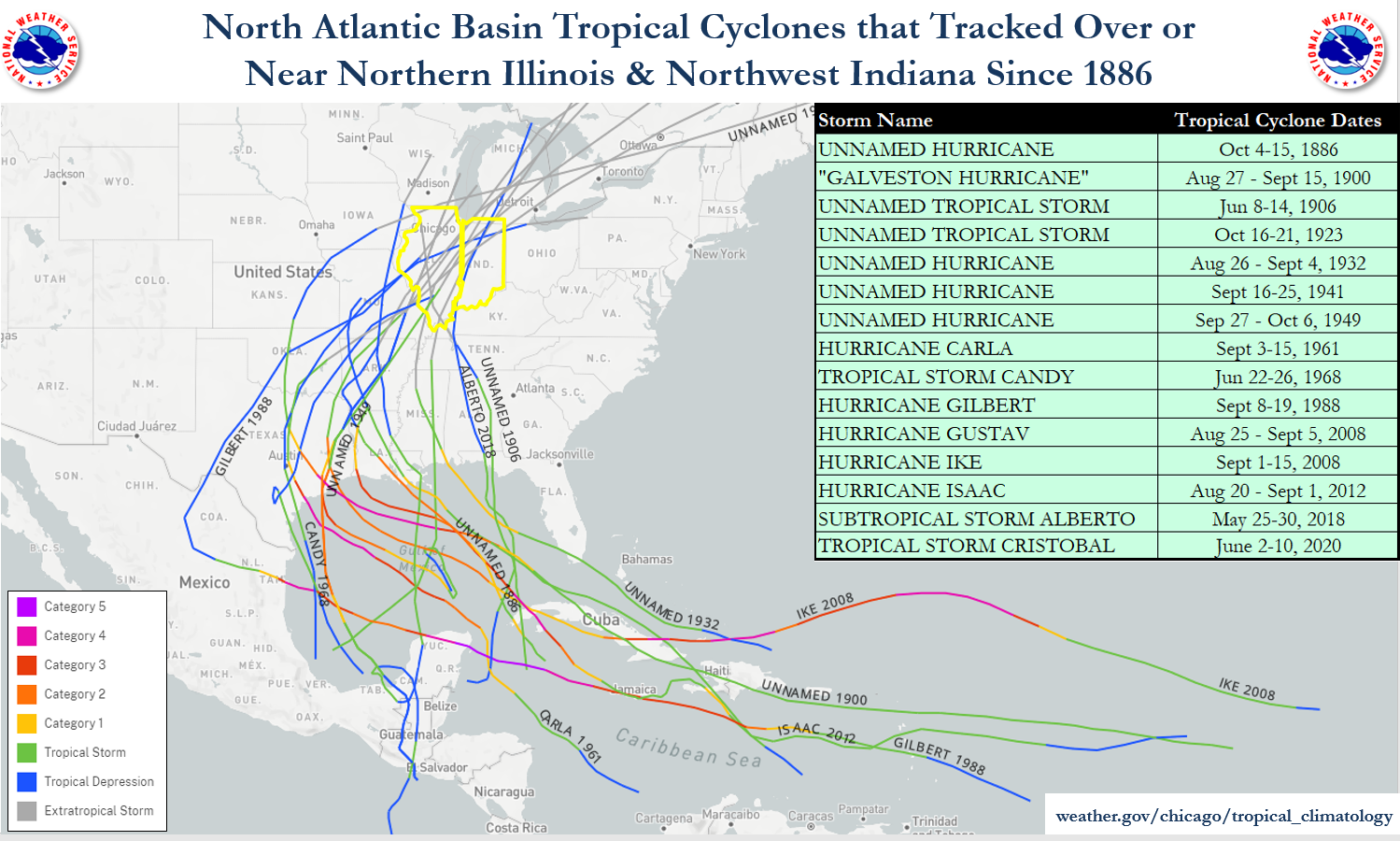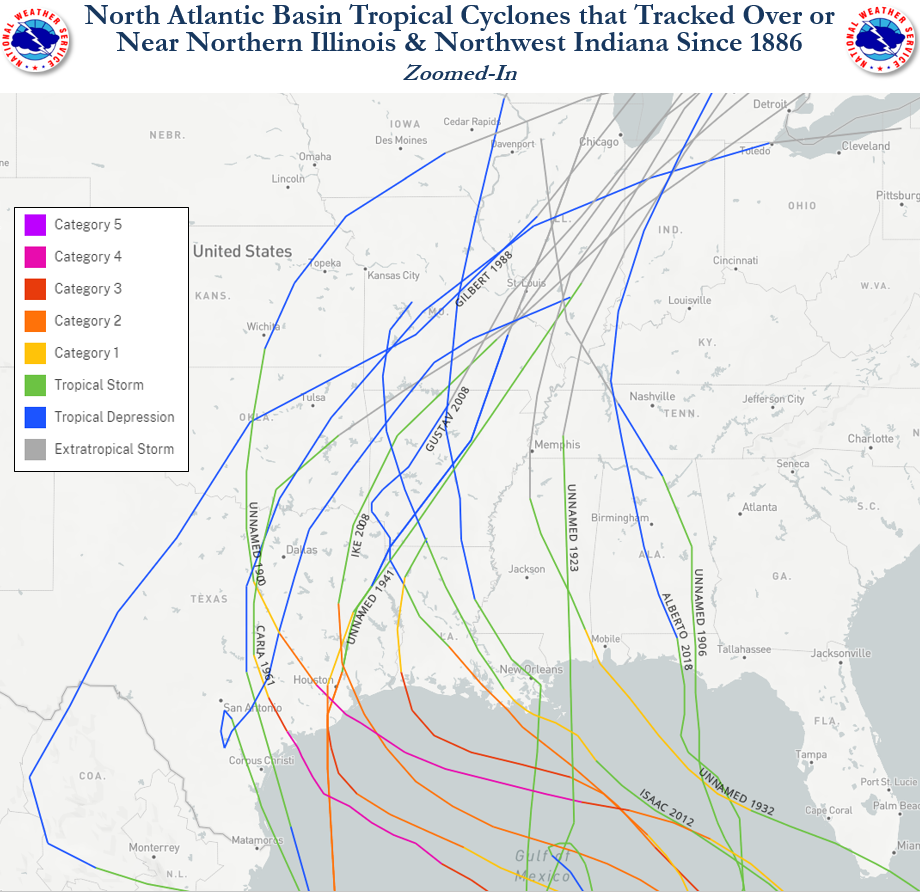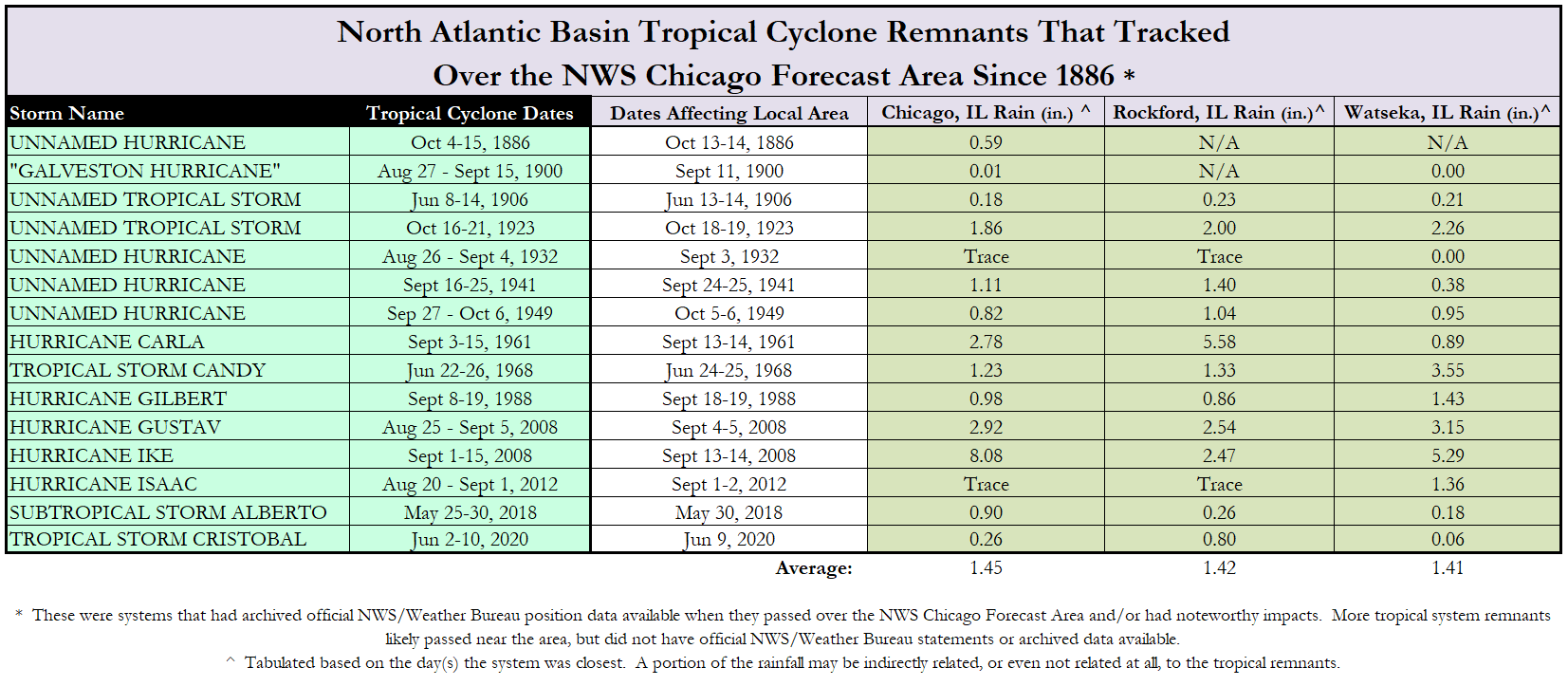Tropical cyclones are organized weather systems with a closed circulation that develop over the tropics. They organize and strengthen in conditions of warm ocean waters and little wind shear. In the North Atlantic Basin, tropical cyclones are most favored during summer and autumn. These systems in their beginning stages are known as tropical depressions. If they continue to intensify with deepening pressure and strengthening winds, they are then named tropical storms. Further intensification with sustained winds reaching 74 mph or stronger would mean classification as hurricanes. The scale for hurricane intensity based on wind speed is known as the Saffir-Simpson scale. Tropical cyclones in the North Atlantic Basin are tracked and forecasted by the National Hurricane Center.
While often known for their damaging winds and battering waves along the shore, tropical cyclones can have impacts well after landfall, namely heavy rainfall. The system remnants gradually lose a portion or much of their "tropical" characteristics as they track inland, and are eventually referred to as extratropical. Remnants of tropical systems have tracked near and even over northern Illinois and northwest Indiana. They have brought rain, sometimes heavy with flooding impacts. Tropical cyclone remnants that affect the local area tend to be curving to the northeast or east, because as they move north after landfall, they become more steered by the mid-latitude westerly winds. In fact, northern Illinois and northwest Indiana are about as far northwest as Atlantic Basin tropical remnants can track, as seen on this tropical cyclone history map from the National Hurricane Center.
Below are wide scale and zoomed-in track maps, followed by a fact list for tropical system remnants that have moved over the NWS Chicago County Warning Area (CWA) since 1886.
|

|
|
|

|
| Figure 1: Tropical cyclone remnant tracks that have impacted the NWS Chicago CWA. |
|
|
Figure 2: Same as Figure 1, but zoomed in with each storm track labeled. |
 |
| Table 1: Listing of tropical systems that have impacted the NWS Chicago CWA and associated rainfall. |
- There have been 15 tropical/subtropical cyclone remnants documented that have tracked over or near northern Illinois and northwest Indiana based on archived official NWS/Weather Bureau position data, or recorded impacts in the local area.
- This can be interpreted as a ~10% chance in a given year of tropical cyclone remnants passing over the local area (or averaging out to once every nine years).
- Storms that have tracked over the area include such notable hurricanes as Ike (2008), Gilbert (1988), Carla (1961), and "The Great Galveston Hurricane" (1900).
- All of the systems tracked through or originated in the Gulf of America as seen in Figures 1 and 2, and all made landfall at or west of Panama City, Florida. Most of the systems (10) struck Louisiana or Texas.
- By month, the most common one of tropical remnant impacts in the local area is September (8), which is not a surprise given that is also the peak of the hurricane season. After that comes October (3) and June (3), and then May (1), with none in July or November.
- Most of the system remnants that passed over the local area did bring rainfall as the above table shows. The rainfall was not always distributed with the heaviest in the southern CWA as one may expect. This likely was because these systems were more extratropical, and thus not as compact in their rain footprint as when tropical.
- The most impacting tropical systems were the back-to-back flooding effects of Hurricane Gustav's and Hurricane Ike's remnants in September 2008. These tracked over the area within ten days of each other and came on the immediate heels of a very wet summer.
- Hurricane Sandy in 2012 retrograded westward after its New Jersey extratropical landfall. While its remnant center passed no closer than Lake Erie, its strong winds were felt as far west as the local area, including tropical storm force gusts over Lake Michigan and 20+ ft waves.
- Tropical Storm Cristobal in 2020 actually began in the far eastern Pacific Ocean and thus was named using a different basin list, and that was Tropical Storm Amanda. As the system crossed Central America it weakened, but after re-emerging in the Bay of Campeche, it intensified and was re-classified as an Atlantic Basin storm. The next name up for that basin was Cristobal. After landfall as a tropical storm near New Orleans, the remnants tracked northward just west of the Mississippi River and would bring the local area gusty showers. The next day would be additional strong thunderstorms, though these were not associated with the remnants.
|
Related Links:
Compiled by Matt Friedlein, Lead Forecaster - 2012 (updated 2021)
